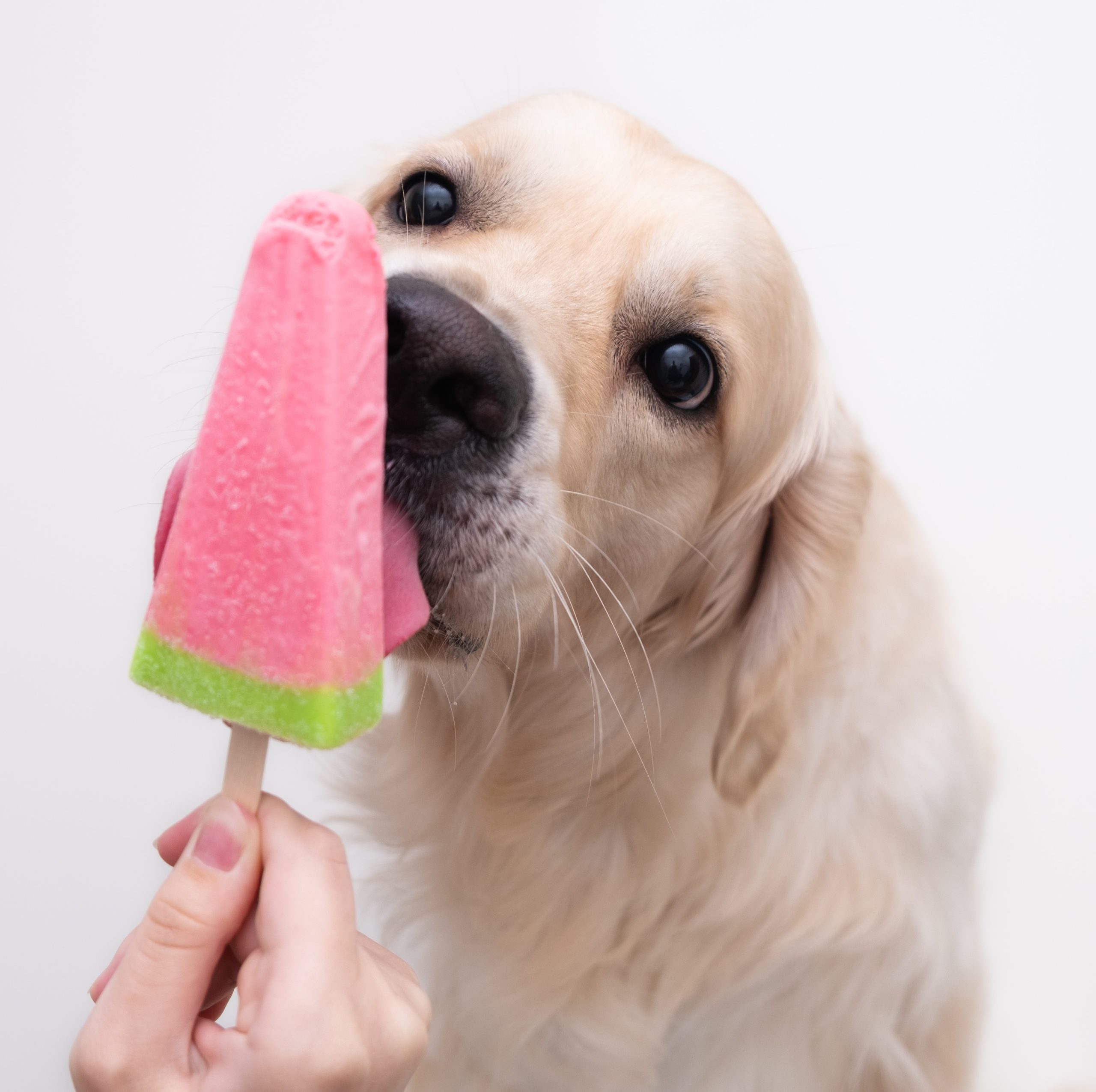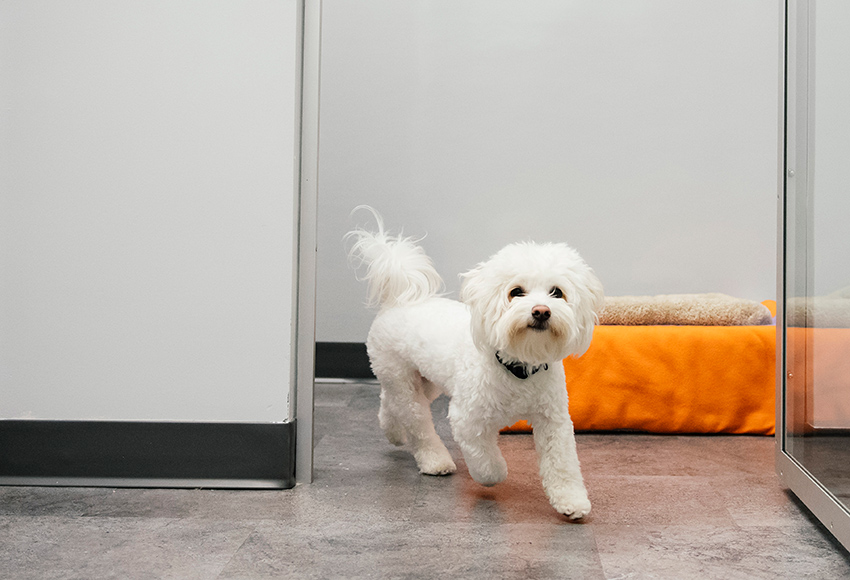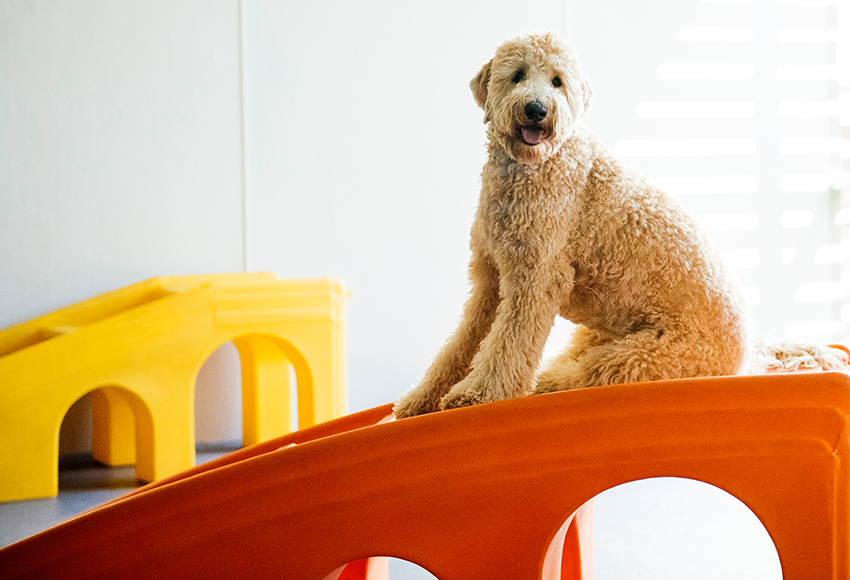How to Keep Your Dog Safe in a Thunderstorm in Alexandria VA
May 30, 2024

Imagine that a thunderstorm is approaching while you’re relaxing in Alexandria, Virginia. Your typically placid dog begins to shiver and hide as the sky grows darker and thunder vibrates. Thunderstorms frequently occur in Alexandria, and they can be extremely upsetting for dogs.
It’s critical to know how to keep your dog safe and comfortable during these storms. At Dogtopia Alexandria, we will cover the reasons behind dogs’ dread of thunderstorms, present calming techniques, and preparedness advice, and provide nearby assets to help your pet feel safe.
Understanding Your Dog’s Fear of Thunderstorms
Understanding these following unique local factors can help pet owners better prepare as well as support their furry companions during storms:
● Behavioral Signs
Dogs often show signs of anxiousness and fear during thunderstorms. Shaking, hiding, complaining, pacing, and even making an attempt to flee are typical responses. These actions are unmistakable signs that the storm is causing your dog discomfort.
● Psychological Impact
Dogs’ keen senses are a major contributing factor in this dread. Because they are far more auditory-sensitive than humans, the deafening thunderclaps are especially frightening to them. Static energy in the air can also be uncomfortable, which exacerbates their worry. Dogs may become even more fearful if they connect the shift in the atmosphere as well as the lightning’s flashing lights to danger.
● Local Perspective
Thunderstorms can be severe and frequent in Alexandria, Virginia, which makes pets there more anxious. Because of the humid environment in the city, strong storms with thunderous thunder and bright lightning are common.
Dogs may find the experience even more distressing because of how amplified these noises can be in an urban setting with plenty of structures and infrastructures.
Preparing for Thunderstorm Season in Alexandria, VA
● It’s critical to stay aware about approaching thunderstorms in order to prepare. Make use of trustworthy local weather resources, such the Alexandria Weather Service, NOAA Weather Radar, and the Weather Channel app. These technologies let you foresee storms while taking prompt action to safeguard your dog by providing real-time information, alarms, and predictions.
● Making your dog’s surroundings safe and comfortable will go a long way toward easing their storm anxiety. Find a peaceful interior space away from openings where there won’t be as much lightning or noise. To provide them a sense of security, stock this area with their favorite pillows, toys, or perhaps even a piece of your clothing.
Maintaining the appropriate supplies on hand might go a long way toward helping your dog stay calm throughout a storm. Stock up on bedding and pillows, for example, to create a warm and inviting space.
● Favorite Toys: For consolation and distraction.
● Treats that Calm: Items that contain chamomile or CBD can help reduce anxiety.
● Anxiety wraps, often known as thundershirts, are form-fitting clothes that gently press on dogs to help them relax.
● Thunder noise-cancelling devices or soundtracks are also known as white noise machines or soothing tunes.
● Pheromone diffusion devices: They release soothing aromas that can aid in lowering anxiety (Smith, 2020).
Post-Thunderstorm Care
It’s critical to evaluate your dog’s health following a storm to look for any indications of chronic anxiety, such as trembling, panting excessively, concealment, or changes in eating. It’s essential to speak with a veterinarian if these symptoms continue.
Your dog can feel secure again if you console them with soft petting, a comforting voice, and the restoration of typical activities. Reassuring your pet works best when you give them treats and include them in what they like to do.
Consider gradual conditioning training, which involves exposing your pet to thunderstorm sounds in a secure setting to help decrease nervousness over time. Skilled behavioural therapy can also be helpful. Regular exercise for your dog might help reduce levels of anxiety in general (Jones et al., 2018).
Conclusion
In conclusion, it takes planning, awareness, and compassion to keep your dog safe and comfortable during thunderstorms in Alexandria, Virginia. You may lessen your dog’s worry and guarantee their well-being by being aware of their fear, making your home safe, and giving them post-storm care.
Remember that you can assist your pet weather any storm if you are patient and provide regular attention. Create a helpful network with other pet owners who are committed to maintaining our dogs healthy and secure by sharing your experiences and advice.
References
● Adams, L. (2019). “Understanding Canine Fear: Causes and Solutions.” Journal of Veterinary Behavior, 35(2), 45-52.
● Smith, K. (2020). “Creating a Safe Haven for Your Dog During Thunderstorms.” Dog Care Quarterly, 18(3), 78-85.
● Jones, R., et al. (2018). “Managing Storm Anxiety in Dogs: Strategies and Resources.” Journal of Animal Behavior, 22(4), 112-120.







